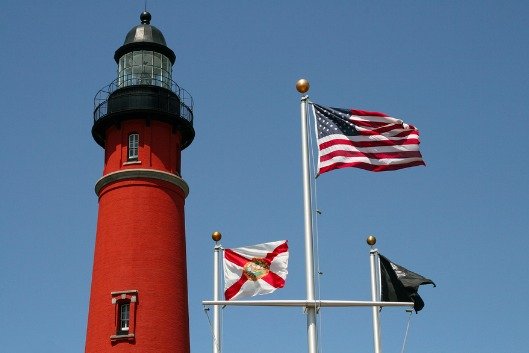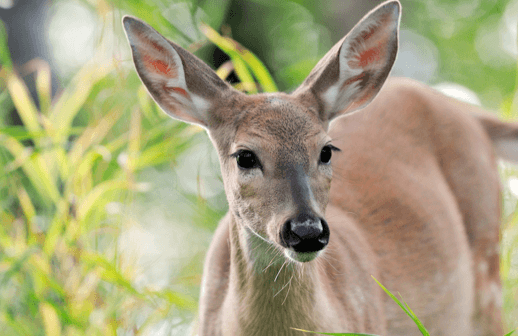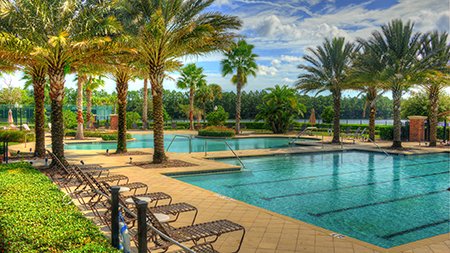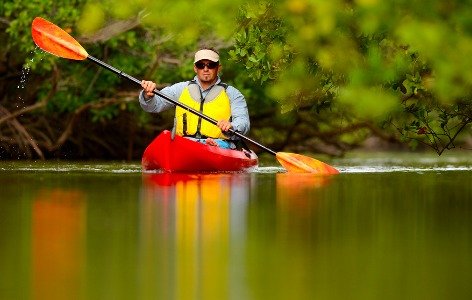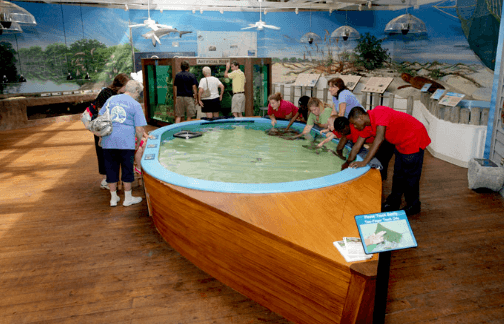
If you are already an expert on marine wildlife, you know that there are lots of great places surrounding Plantation Bay to observe an amazing array of marine wildlife, including many different types of birds.
However, if you are new to observing our local wildlife, a little education can go a long way towards making your experience more enjoyable. Located about 45 minutes away from Plantation Bay, the Marine Science Center at Ponce Inlet makes a great day trip, and its the perfect place to improve your knowledge of Florida marine wildlife in a fun and relaxed setting.
Stingray Touch Pool
One of the most popular features at the Marine Science Center is the Stingray Touch Pool. This 1,400-gallon pool is 13 feet long and filled with cownose stingrays and Atlantic stingrays, as well as a collection of other fish and invertebrates like horseshoe crabs, anemones, sea urchins, and hermit crabs.
Because this pool sits on the ground and has low sidewalls, you will have no problem reaching over its side to touch and interact with its inhabitants. There are also glass windows along the sides of the pool that give you an alternative viewpoint.
Rehabilitation Programs
The Marine Science Center might be best known for its Sea Turtle Rehabilitation Program. The facility has seven “rehab pools” where it can care for injured or sick sea turtles that need assistance getting healthy enough to survive in the ocean by themselves. In addition to injured turtles, you will also find baby sea turtles that may have been washed ashore during rough seas.
Sea turtles aren’t the only rehabilitation work done at the Marine Science Center. There is also a Seabird Rehabilitation Sanctuary where sick or injured birds are cared for. Interacting with the rehabbing birds is a great way to learn more about the more than 140 different species that have been treated at the Marine Science Center.
Pelagic Birding Trips
The best way to experience and learn about unique birds that you cannot find on land is to participate in one of the Marine Science Center’s Pelagic Birding Trips. The term “pelagic” describes birds that spend the majority of their lives out on the open sea. In order to view these birds in their natural habitat, the Pelagic Birding Trips take you about 60 miles out into the ocean to where these types of birds live.
These are usually long trips that start early in the morning and don’t return to land until after dinnertime. They are also on the expensive side and require you to bring your own food and drink, but if you are interested in seeing and learning about more than 20 different species of birds that don’t generally bother coming inland, these trips are a fantastic opportunity!
Research
Another huge aspect of the Marine Science Center is research into how we can better preserve our local marine environments and coral reefs. There is also a great deal of research conducted on the rehabilitated sea turtles that includes tracking their locations via satellite imaging.
If you have a desire to learn more about our local marine wildlife, the Marine Science Center is a great place to begin that education.
If you are already knowledgeable in that area, it is a great place to put that knowledge to work and observe real rehabilitation situations in action!
Regardless of how much you know about wildlife when you arrive at the Marine Science Center, everyone walks out knowing even more than they did walking in.
Image via marinesciencecenter.com

